Take the plunge into writing jazz songs on guitar with these tips from guitar teacher Samuel B.…
Although jazz guitar is a formal discipline, you can mix it into your repertoire of original songs without formal training. Here are five easy ways to do this:
Include Triads In Your Songs
Triads (three-note chords) are your most accessible ally. There are two basic ones.
I refer to the first one as the “L.” It looks like this:
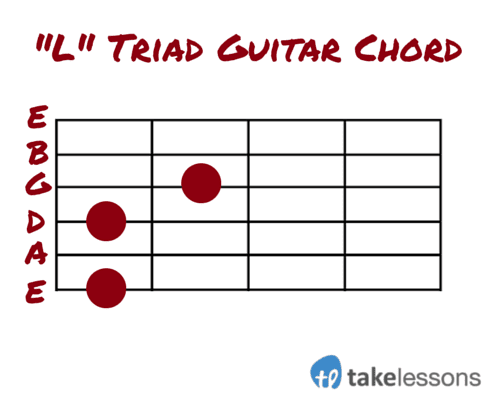
Although it can be strummed, the “L” chord sounds best when plucked (with your thumb, index, and middle fingers to be specific). When plucked, it makes an attractive “thumping” sound. When multiple “L” chords in different positions are played in quick succession, they can imitate walking bass patterns which are common to jazz.
I refer to the other triad as the “triangle.” It looks like this:
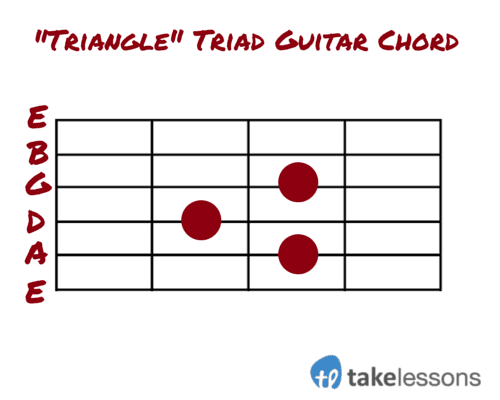
The “triangle” is a five (not six) string chord (ADGBE). Like the “L”, it can be easily transposed anywhere on the neck just by sliding it up or down. While writing a song, I recommend experimenting with both formations in as many different positions as possible.
Combine Them With Barre Chords
Jazz chords are typically more complex than the common first-position chords (C, D, E, F, G, A, and B7th). Sevenths, minors, and other chord variations are common. These two barre chord formations can easily be switched from major to seventh if you remove the note marked with an X. They can also be changed from major to minor by moving the Y back a half step.
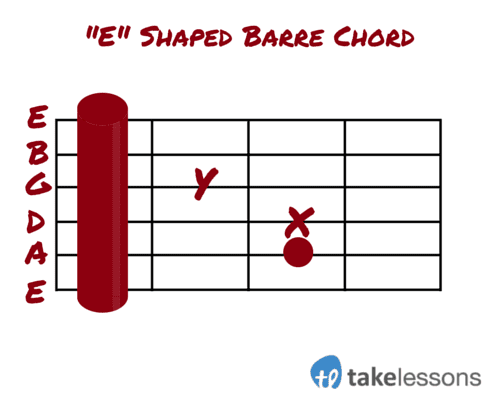
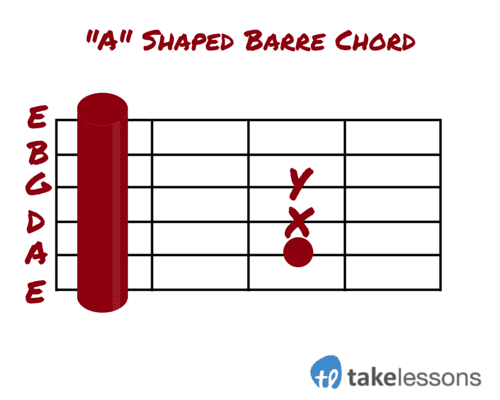
As with the triads, I recommend experimenting with barre chords in different positions too.
Add Pentatonic Notes
The pentatonic scale (“penta” meaning “five”) is comprised entirely of notes that make up the circle of fifths (C, G, D, A, E, B, Gb/F#, Db, Ab, Eb, Bb, and F):
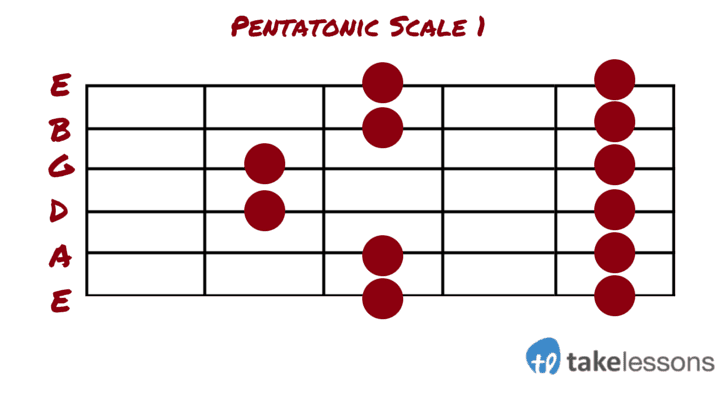
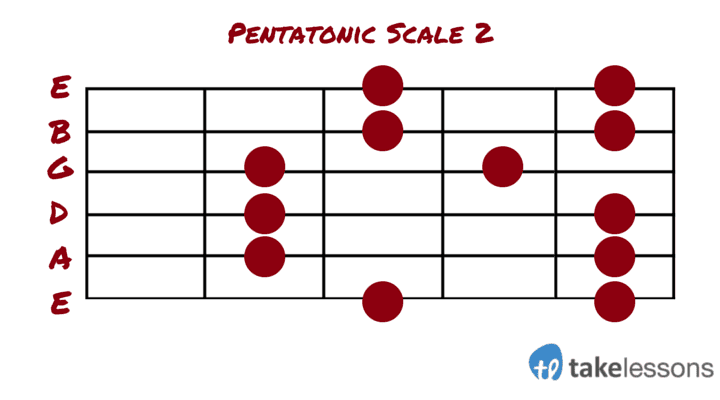
If you haven’t already done so, practice these scale patterns. Use the notes in these scales to improvise.
Keep Your Progression Simple
Although may be familiar with complicated-looking jazz guitar scores (and, yes, many of them contain laundry lists of intricate chords), you’ll benefit more as a songwriter by keeping your chords trim. Start with a I-IV-V pattern (such as A, D, and E7th) and embellish it with the suggestions above.
Remember, your objective is not to win a prize for complexity. It’s to make memorable music. The easier it will be to learn to play, the more memorable it will be in the long run.
Keep Your Subject Material Light
Here’s the fun part – writing lyrics. Compared to other American genres, jazz involves soft and gentle themes. “Grab your coat. Grab your hat. Leave your worries on the doorstep,” is a good example of a great jazz lyric. So is “Stars shining bright above you. Night breezes seem to whisper ‘I love you.’ Birds singing in the sycamore trees. Dream a little dream of me.”
Forget angry topics. You’re not out to take your audience on an emotional roller coaster. If you’re writing a song about heartache, it should be sad and not vindictive:
Willow weep for me
Willow weep for me
Bend your branches down along the ground and cover me
For me, jazz is a basically joyful-sounding music. It’s free from the raw exuberance, aggressive sounds, and gritty topics common to Chicago and Texas blues, contemporary country, and metal. Its music and lyrics should both reflect this by having been written in a peaceful state of mind.
Working with a private guitar teacher is a great way to build your jazz guitar skills fast. Find your guitar teacher today!
 Samuel B. teaches beginner guitar lessons in Austin, TX. He teaches lessons face-to-face without sheet music, which is his adaptation of Japanese instruction (involving a call-and-response method). Learn more about Samuel here!
Samuel B. teaches beginner guitar lessons in Austin, TX. He teaches lessons face-to-face without sheet music, which is his adaptation of Japanese instruction (involving a call-and-response method). Learn more about Samuel here!
Megan L.

